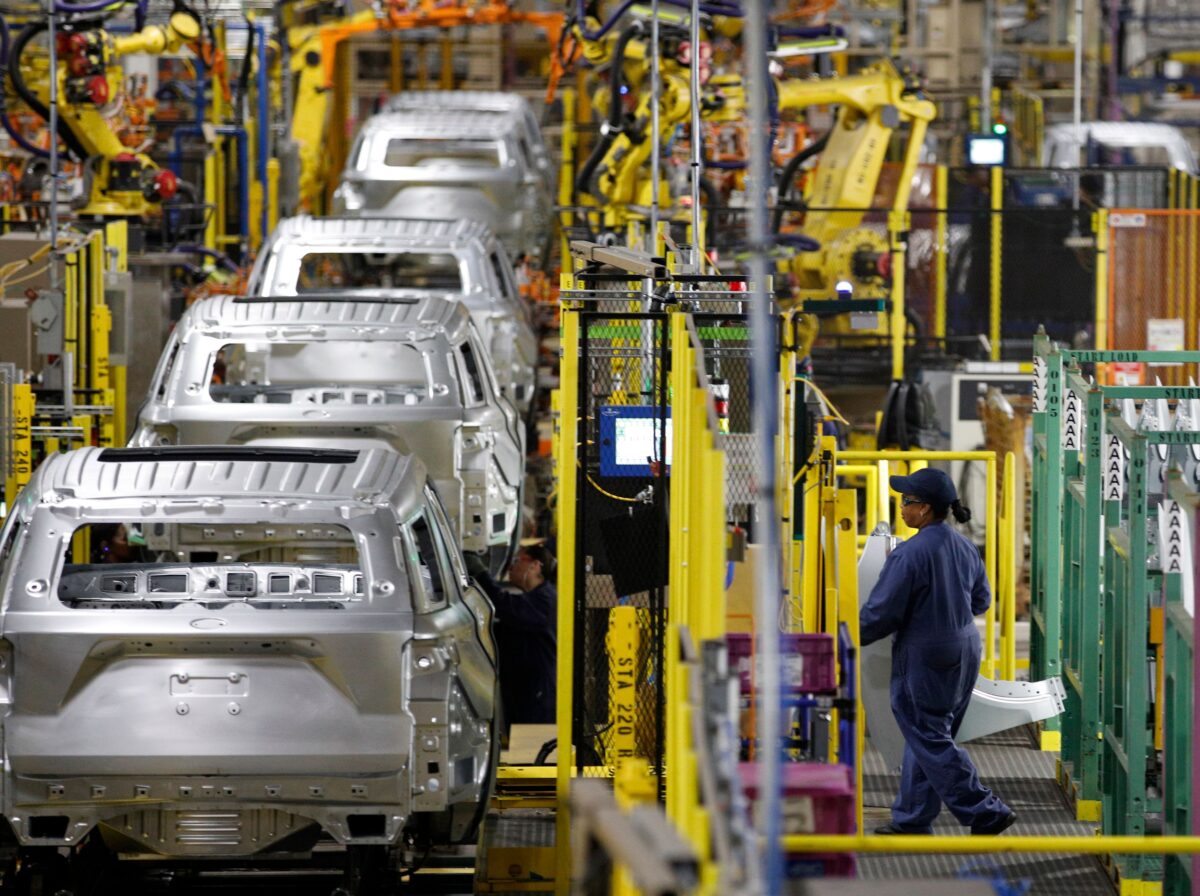


Commentary
As American firms rethink their sourcing in China, some, it seems, have decided to bring their operations home.
In 2022 and so far this year, investment in domestic U.S. manufacturing has risen smartly. Some of this spending aims to take advantage of federal largess, subsidies, and tax advantages for domestic chip making, electric vehicles (EVs), and the like. But the trend also seems to have support from other, more durable economic fundamentals. The recovery, however, is much more about capacity and output than about employment.
Last year, the Commerce Department reported spending on new manufacturing capacity equaled some $108 billion, up 12.5 percent from 2021. Only two months’ data are available in 2023, but they show a marked acceleration from last year’s growth pace. February spending is already 8.2 percent over last December’s. Overall manufacturing capacity has risen only a modest 1.4 percent over the last 12 months, but that is only reasonable since even a bumper year of new investment does little to alter overall capacities built up over the years. The trend nonetheless is encouraging, showing capacity growth after more than 10 years of decline between 2007 and 2020.
There can be little doubt that some of this investment surge reflects the CHIPs for America Act and the strangely named Inflation Reduction Act. Both were passed last year and offer subsidies for the domestic construction of semiconductor manufacturing facilities. Soon after the legislation passed, Intel and TSMC both announced their intention to build new facilities in the United States, and money has already begun to flow. Intel had planned its facility before the legislation passed, but spending no doubt accelerated in response to the new laws.
While the legislation clearly has had an effect, it cannot sustain investment spending at its present rate of growth. Once manufacturers replace overseas operations and telescope into the current American facilities planned for future years, the pace of investment growth should slow to that of the global market for semiconductors and EVs. No doubt, chips, EVs, and batteries will grow at a smarter pace than other forms of manufacturing, but nothing resembling the pace of the present surge. But if the legislation will have a diminishing effect, other, more fundamental influences should sustain a domestic U.S. manufacturing expansion.
Supply chain considerations, energy costs, and rising interest rates are three of these factors. The supply chain story is a familiar one by now. During the pandemic and in the recovery as quarantines and lockdowns lifted, businesses discovered that supplies and sourcing placed offshore were less reliable than once thought and certainly were needed. In response, some firms have decided to bring some or all their operations home. That trend found reinforcement as, at the same time, energy costs and energy reliability in China and elsewhere also become less reliable. Meanwhile, rising interest rates played a role. By impelling retail and wholesale buyers to keep their inventory stocks lean, manufacturers faced a demand for more frequent and prompter deliveries, something well served by nearby production facilities.
Wage differentials have had their own influence on this production equation. For years, cheap, reliable labor in China and elsewhere in Asia impelled American businesses to take the risk of long supply lines and other unknowns to build and source in China. The wage differentials were certainly compelling. In 2000, just after China joined the World Trade Organization (WTO), the average American wage was 33 times that of the average in China. But as China’s economy has developed, wages there have begun to catch up to America’s. At last measure, American wages were some 6.5 times the Chinese equivalent, and still a big difference but nowhere near as compelling as earlier.
Meanwhile, automation by reducing the need for squads of workers has further sapped whatever wage advantage China still has. Comments by Donald Allan, Jr., CEO of Black and Decker, put the effect succinctly into perspective. He contrasted his firm’s plants in China and Mexico with a new one just built in North Carolina. The Mexican and Chinese plants, he explained, require 50–75 workers on the line, but the one in North Carolina requires only 10–12 workers, and in the next phase of automation, it will require only two or three workers.
And there are signs that a lot of the money being spent aims at automation and not raw expansion. Commerce Department statistics indicate that only some 15 percent of overall business investment spending went to the construction of structures. The remaining 85 percent went to equipment and intellectual property, in other words, to a focus on efficiency-enhancing investments, such as systems, robots, and the like.
American manufacturing will grow, but it will not employ the numbers it did in the past nor even that it employed overseas not too long ago.
Views expressed in this article are the opinions of the author and do not necessarily reflect the views of The Epoch Times.
